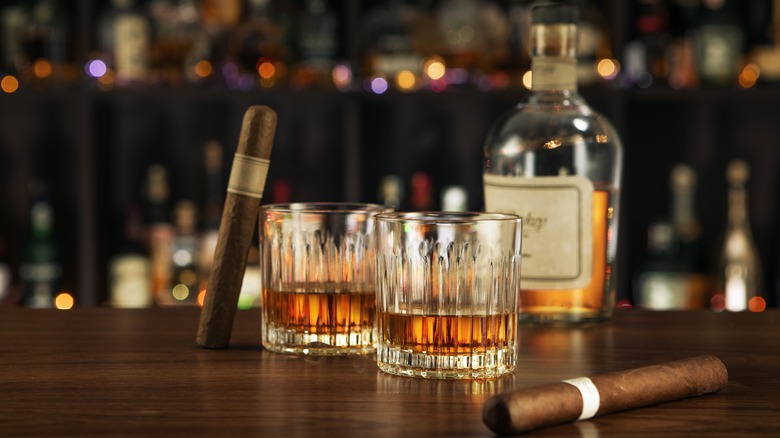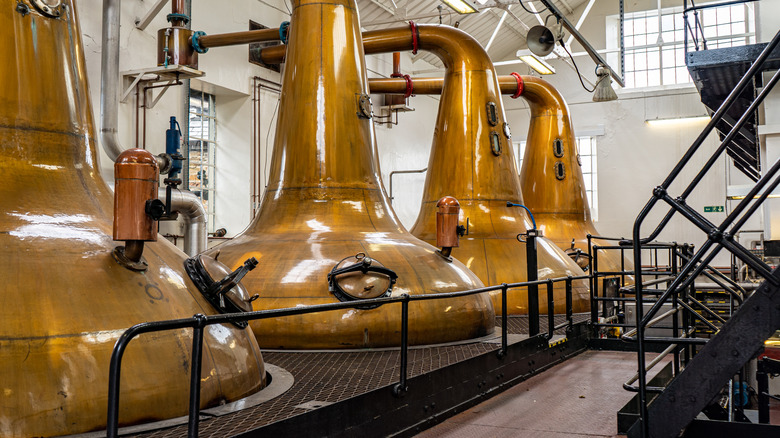What Are Pot Stills And How Do They Affect The Bourbon Making Process?
If you've ever had the chance to visit a distillery, you've likely noticed the huge copper stills. The vast majority of bourbon is distilled in column stills, but some craft distilleries are bringing back the older pot still. At its most basic, pot stills have a squat, bulbous base called the pot which has a tube at the top called the lyne arm. The lyne arm extends over to another container called the condenser.
To make bourbon, there are essentially three steps: fermentation, distillation, and maturation. Once the fermentation is done, you place the liquid in the pot portion of the pot still to distill it. The mixture is heated, causing the alcohol to evaporate. The alcohol then floats up through the lyne arm over to the condenser where it is cooled and turned back into liquid form. You take what's in the condenser and place it in new charred oak barrels. After a few years, you remove it from the barrel and you have bourbon.
A distillery will use a pot still when they want a richer, thicker end product. Pot stills only work on a batch-by-batch basis. After each batch is done, the crew has to empty the pot still out and clean it before starting a new batch. The extra time and effort keeps most distilleries away, but as craft bourbon grows in popularity and consumers demonstrate they are willing to pay a premium for good whiskey, pot stills are becoming popular once more.
The ins and outs of pot stills
The reason most bourbon distilleries use column stills is that they are continuous, meaning you don't need to clean them after each use. That's appealing for a business that's looking to maximize its time. Some distilleries are getting around this tradeoff by using hybrid stills, which combine the pot and column still into one versatile piece of machinery.
Beyond the speed of production, the type of still used matters because of how the alcohol is treated during the distillation process. The flavor of the spirit can change depending on how much contact the alcohol vapor has with the surface of the still, how quickly it is condensed back into a liquid, and many other factors which are determined by the shape of the still itself.
An easy way to remember the difference between pot stills and column stills is that pot stills are preferred by small-batch, craft bourbon distilleries while column stills are preferred by high-volume bourbon distillers. Column stills have a much higher volume of output, but pot stills are known to create a more flavorful whiskey because they don't remove as many natural oils from the vapor as column stills do.

